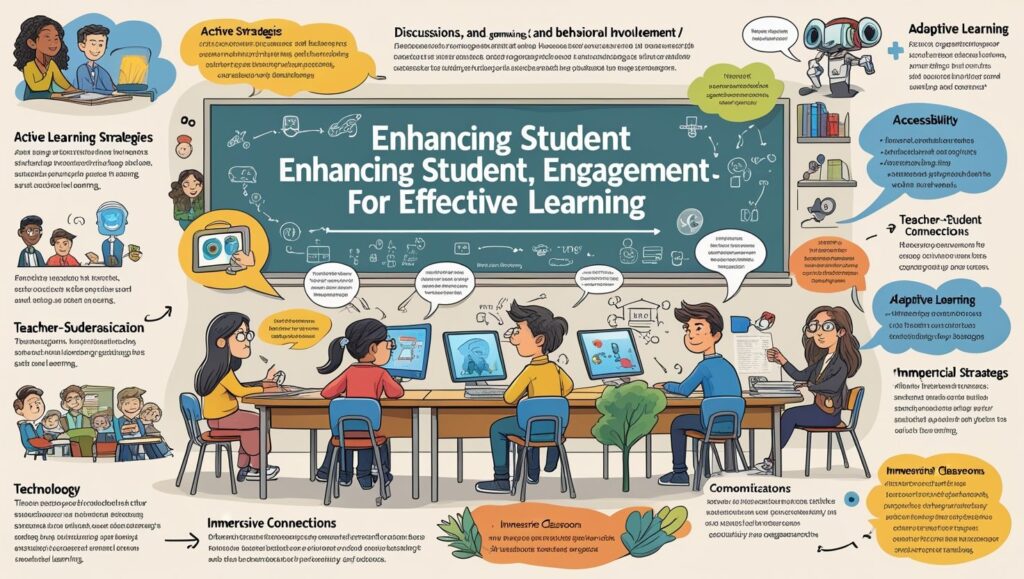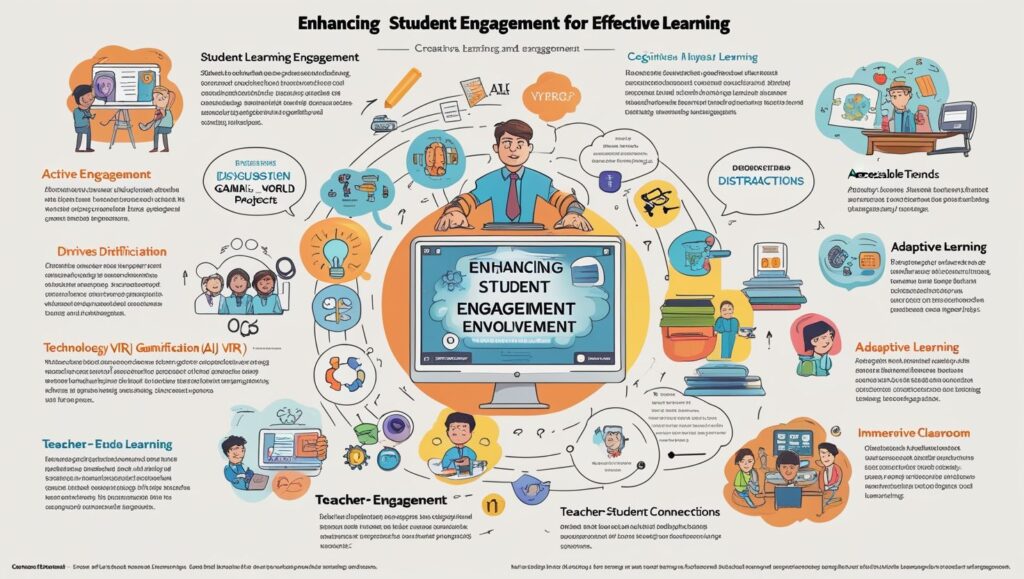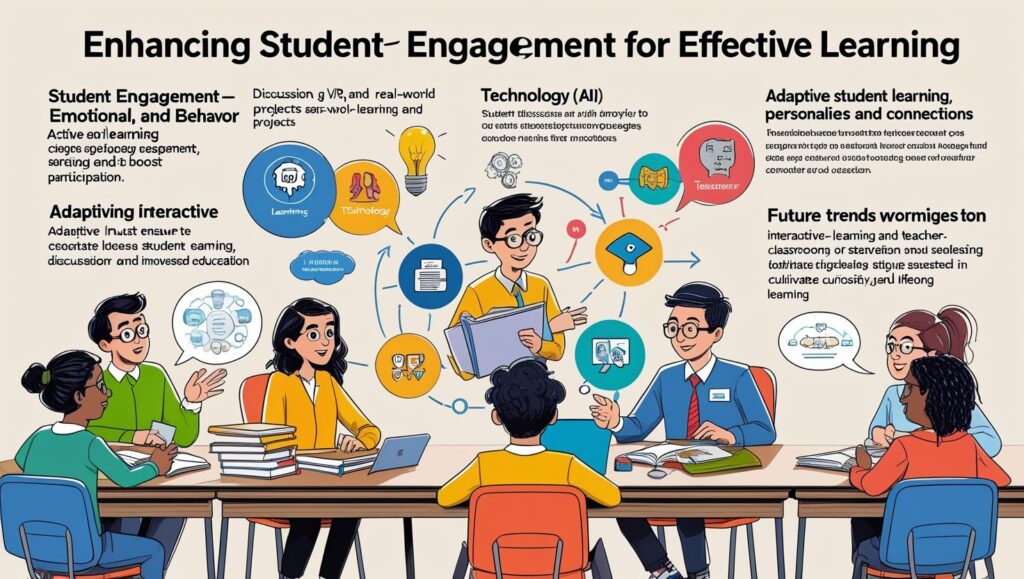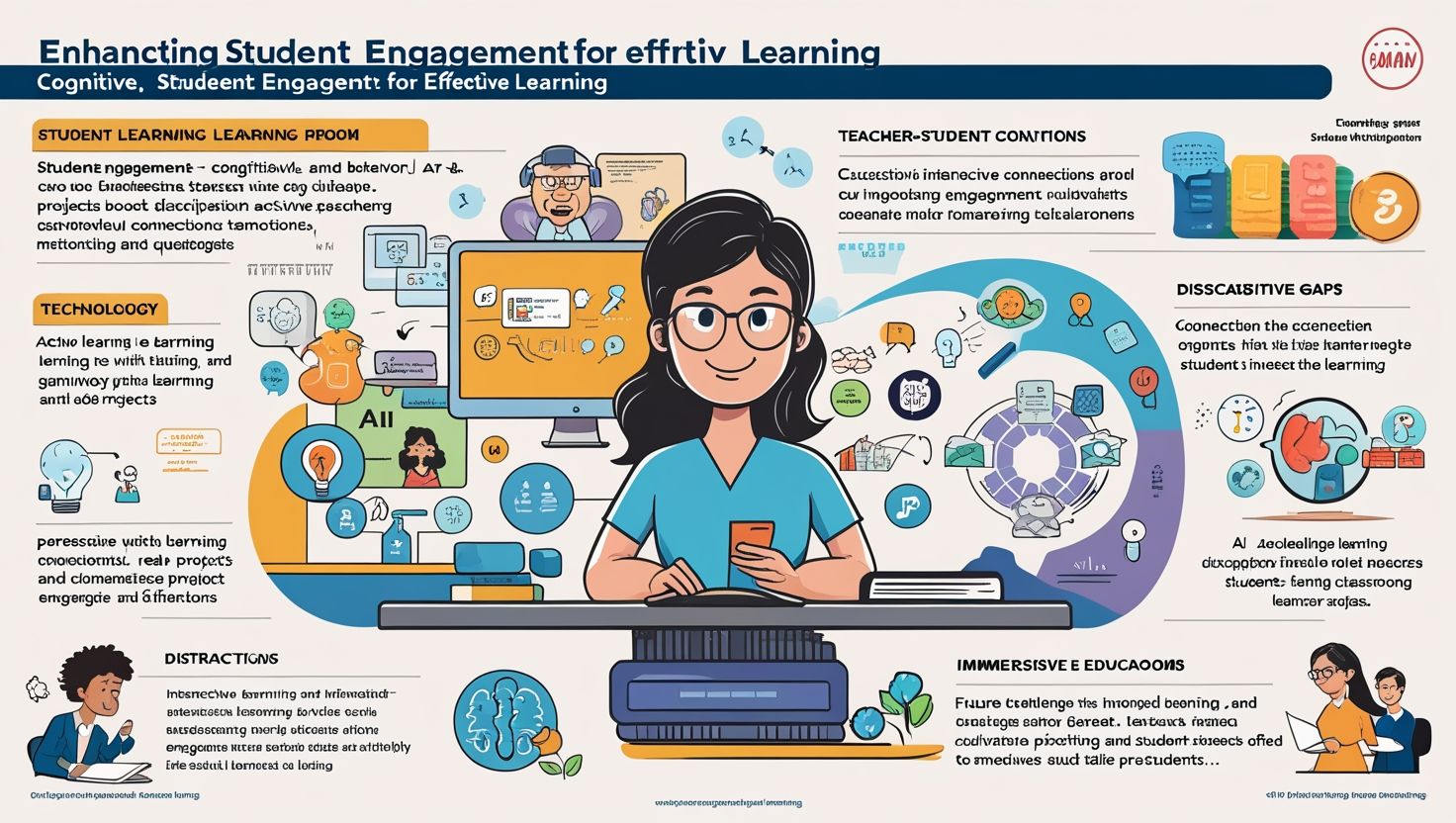Introduction
Student Engagement in Education for Learning, Student engagement has always been a cornerstone of effective education. It refers to the degree of attention, curiosity, interest, optimism, and passion that students show when they learning. Engaged students are more likely to retain information, develop critical thinking skills, and achieve academic success.
As we look toward the year 2100, advancements in technology, neuroscience, and pedagogical theories will revolutionize how students engage with education. This article explores the future of student engagement, examining key trends such as artificial intelligence (AI), immersive learning environments, personalized education, and the evolving role of teachers.
1. The Role of Artificial Intelligence in Student Engagement
By 2100, AI will be deeply integrated into education, transforming how students interact with learning materials. Some key developments include:
a) AI-Powered Personalized Learning
- AI algorithms will analyze students’ learning patterns, strengths, and weaknesses in real-time.
- Customized lesson plans will adapt to each student’s pace, ensuring no one left behind.
- AI tutors will provide instant feedback, reducing frustration and increasing motivation.

b) Emotion-Sensing AI
- AI systems equipped with facial recognition and biometric sensors will detect student emotions.
- If a student is disengaged or frustrated, the system will modify teaching strategies accordingly.
- This will help maintain optimal engagement levels throughout lessons.
c) Gamified Learning with AI
- AI will enhance gamification by creating dynamic, interactive challenges tailored to individual students.
- Rewards, leaderboards, and virtual achievements will keep students motivated.
2. Immersive Learning Environments: Virtual and Augmented Reality
By 2100, traditional classrooms may replaced (or supplemented) by fully immersive learning environments.
a) Virtual Reality (VR) Classrooms
- Students will attend virtual schools where they can interact with 3D models, historical simulations, and scientific experiments.
- Field trips to ancient civilizations, space exploration, and underwater ecosystems will be routine.
b) Augmented Reality (AR) Enhancements
- AR glasses or neural implants will overlay digital information onto the real world.
- Students studying biology could see 3D models of cells floating in front of them.
- Engineering students could manipulate holographic machinery for hands-on learning.

c) Brain-Computer Interfaces (BCIs) for Direct Knowledge Transfer
- BCIs may allow direct knowledge uploads, reducing traditional study time.
- Students could “experience” historical events or scientific concepts through neural simulations.
3. Personalized and Self-Directed Learning
The one-size-fits-all model of education will be obsolete by 2100. Instead, learning will highly personalized.
a) Student-Centered Curriculums
- Students will choose their own learning paths based on interests and career goals.
- AI will recommend courses, projects, and extracurricular activities tailored to individual aspirations.
b) Mastery-Based Progression
- Instead of fixed semesters, students will advance only after mastering a subject.
- This eliminates boredom from repetitive lessons and frustration from moving too quickly.
c) Lifelong Learning Ecosystems
- Education won’t end at graduation; continuous upskilling will be integrated into daily life.
- Micro-credentials and digital badges will replace traditional degrees in many fields.
4. The Evolving Role of Teachers
Teachers will transition from lecturers to facilitators and mentors.
a) AI-Assisted Teaching
- AI will handle administrative tasks, grading, and basic instruction, freeing teachers to focus on mentorship.
- Educators will guide students in critical thinking, creativity, and emotional intelligence.

b) Emphasis on Social-Emotional Learning (SEL)
- With AI handling academics, teachers will focus on developing empathy, collaboration, and resilience.
- Group projects and peer learning will be central to engagement strategies.
c) Global Collaborative Classrooms
- Students will work on international projects with peers from different cultures via real-time holographic communication.
- This fosters global awareness and teamwork skills.
5. Challenges and Ethical Considerations
While the future of student engagement is promising, there are potential risks:
a) Digital Divide and Accessibility
- Not all students may have access to advanced technology, leading to inequality.
- Governments and institutions must ensure equitable distribution of resources.
b) Privacy Concerns
- AI and biometric tracking raise concerns about data security and surveillance.
- Strict regulations will be needed to protect student privacy.
c) Over-Reliance on Technology
- Human interaction remains crucial for emotional and social development.
- Balancing tech-driven learning with real-world experiences will be essential.
Conclusion
Student Engagement in Education for Learning, student engagement will be more dynamic, personalized, and immersive than ever before. AI, VR, AR, and brain-computer interfaces will redefine how students learn, while teachers will shift toward mentorship and emotional guidance. However, ethical considerations around privacy, accessibility, and human connection must be addressed to ensure an inclusive and balanced education system.
The future of education is not just about smarter technology—it’s about creating a learning ecosystem where every student is motivated, empowered, and fully engaged in their educational journey.

Great insights! This really gave me a new perspective. Thanks for sharing.
Good writing